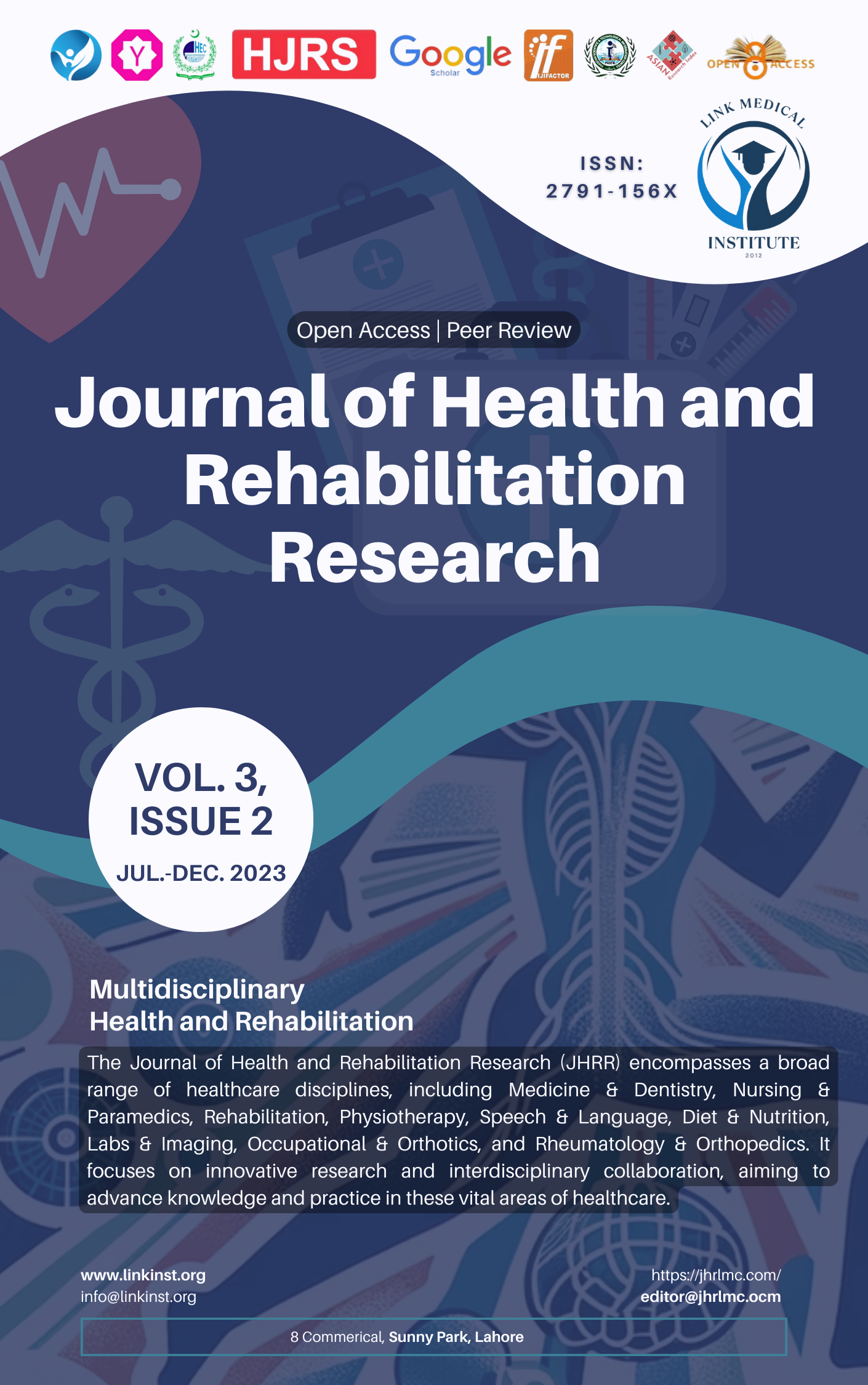Comparison of Anesthetic Efficacy of 4% Articaine and 2% Lidocaine for Maxillary Buccal Infiltration in Patients with Irreversible Pulpitis
DOI:
https://doi.org/10.61919/jhrr.v3i2.1740Keywords:
Articaine, Lidocaine, Maxillary Buccal Infiltration, Irreversible Pulpitis, Local Anesthesia, Pain Management, EndodonticsAbstract
Background: Effective pain management during dental procedures in patients with irreversible pulpitis remains a challenge. Local anesthetics like 4% articaine and 2% lidocaine are widely used, but their comparative efficacy requires further investigation.
Objective: To compare the anesthetic efficacy of 4% articaine with 2% lidocaine for maxillary buccal infiltration in patients with irreversible pulpitis.
Methods: This randomized, cross-sectional study included 96 adult patients with irreversible pulpitis undergoing endodontic treatment. Patients were divided equally into two groups: Group A received 1.8 mL of 4% articaine with 1:100,000 epinephrine, and Group B received 1.8 mL of 2% lidocaine with 1:80,000 epinephrine. Anesthetic solutions were administered using standard inferior alveolar nerve block techniques, and pain intensity was assessed using the Visual Analog Scale (VAS). Success rates were evaluated during access cavity preparation and pulpectomy. Data were analyzed using SPSS version 25.0, with a p-value <0.05 considered statistically significant.
Results: During access cavity preparation, success rates were higher with articaine (73%) compared to lidocaine (56%) (p = 0.023). Pain scores were significantly lower for articaine (0.275 ± 0.445) compared to lidocaine (0.880 ± 0.724) (p = 0.001). No significant differences were observed during pulpectomy (p = 0.43).
Conclusion: Articaine demonstrated superior efficacy during access cavity preparation but was comparable to lidocaine during pulpectomy, making it a viable alternative for endodontic anesthesia.
Downloads
References
Edwards D, Bailey O, Stone SJ, Duncan H. How Is Carious Pulp Exposure And Symptomatic Irreversible Pulpitis Managed In UK Primary Dental Care? Int Endod J. 2021;54(12):2256-75.
Passos LJ, Coelho PE, Fabricio RP, Gomes GN, Vieira GC, Da Silva FK. Systematic Review Of Drug Control And Management Of Pain And Anxiety In Endodontic Treatment. Health Sci J. 2019;13(2):1-4.
Moriarty SC. Dentists' Knowledge, Skills, And Application Of Behavior Guidance Techniques On Adults With Dental Fear & Anxiety. Nova Southeastern University; 2015.
Malamed SF, Tavana S, Falkel M. Faster Onset And More Comfortable Injection With Alkalinized 2% Lidocaine With Epinephrine 1:100,000. Compend Contin Educ Dent. 2013;34(2):e2.
Paxton K. Anesthetic Efficacy Of Articaine Hydrochloride Versus Lidocaine Hydrochloride: A Meta-Analysis. The University of Iowa; 2008.
Sood R, Hans MK, Shetty S. Comparison Of Anesthetic Efficacy Of 4% Articaine With 1:100,000 Epinephrine And 2% Lidocaine With 1:80,000 Epinephrine For Inferior Alveolar Nerve Block In Patients With Irreversible Pulpitis. J Clin Exp Dent. 2014;6(5):e520-4.
Ashraf H, Kazem M, Dianat O, Noghrehkar F. Efficacy Of Articaine Versus Lidocaine In Block And Infiltration Anesthesia Administered In Teeth With Irreversible Pulpitis: A Prospective, Randomized, Double-Blind Study. J Endod. 2013;39(1):6-10.
Tortamano IP, Siviero M, Costa CG, Buscariolo IA, Armonia PL. A Comparison Of The Anesthetic Efficacy Of Articaine And Lidocaine In Patients With Irreversible Pulpitis. J Endod. 2009;35(2):165-8.
Kung J, McDonagh M, Sedgley CM. Does Articaine Provide An Advantage Over Lidocaine In Patients With Symptomatic Irreversible Pulpitis? A Systematic Review And Meta-Analysis. J Endod. 2015;41(11):1784-94.
Alzahrani FS. Comparative Studies Of The Anesthetic Efficacy Of 4% Articaine Used As Mandibular Infiltration Versus 2% Lidocaine Used As Inferior Dental Nerve Block In Extraction And Pulpotomy Of Mandibular Primary Molars [Doctoral Dissertation]. University of Leeds; 2017.
Zanjir M, Lighvan NL, Yarascavitch C, Beyene J, Shah PS, Azarpazhooh A. Efficacy And Safety Of Pulpal Anesthesia Strategies During Endodontic Treatment Of Permanent Mandibular Molars With Symptomatic Irreversible Pulpitis: A Systematic Review And Network Meta-Analysis. J Endod. 2019;45(12):1435-64.
El Sayed M, Gaballah K. Postanesthetic Cold Sensibility Test As An Indicator For The Efficacy Of Inferior Alveolar Nerve Block In Patients With Symptomatic Irreversible Pulpitis Of Mandibular Molars. Int J Dent. 2021;2021:9913221.
Yang G, Jin J, Wang K, Baad-Hansen L, Liu H, Cao Y, Xie QF, Svensson P. Effect Of Lingual Nerve Block And Localised Somatosensory Abnormalities In Patients With Burning Mouth Syndrome—A Randomised Crossover Double-Blind Trial. J Oral Rehabil. 2023;51(9):1017-24.
Zain M, Khattak SU, Sikandar H, Shah SA. Comparison Of Anesthetic Efficacy Of 4% Articaine Primary Buccal Infiltration Versus 2% Lidocaine Inferior Alveolar Nerve Block In Symptomatic Mandibular First Molar Teeth. J Coll Physicians Surg Pak. 2016;26(1):4-9.
Afkhami F, Pirmoazen S, Ardestani A, Fard MJ. Comparative Evaluation Of Anesthetic Efficacy Of Inferior Alveolar Nerve Block And Inferior Alveolar Nerve Block Plus Buccal Or Lingual Infiltration Using Articaine In Mandibular Molars With Irreversible Pulpitis: A Preliminary Prospective Randomized Single-Blind Clinical Trial. Quintessence Int. 2021;52(9):802-11.
Ravi S, Hans MK, Shetty S. Comparison Of Anesthetic Efficacy Of 4% Articaine With 1:100,000 Epinephrine And 2% Lidocaine With 1:80,000 Epinephrine For Inferior Alveolar Nerve Block In Patients With Irreversible Pulpitis. J Clin Exp Dent. 2014;6(5):e520-4.
Tortamano IP, Siviero M, Costa CG, Buscariolo IA, Armonia PL. Onset And Duration Period Of Pulpal Anesthesia Of Articaine And Lidocaine In Inferior Alveolar Nerve Block. Braz Dent J. 2013;24(4):371-4.
Brunetto PC, Ranali J, Bovi-Ambrosano GM, De Oliveira PC, Groppo FC, Meechan JG, Volpato MC. Anesthetic Efficacy Of 3 Volumes Of Lidocaine With Epinephrine In Maxillary Infiltration Anesthesia. Anesth Prog. 2008;55(2):29-34.
Rogers BS, Botero TM, McDonald NJ, Gardner RJ, Peters MC. Efficacy Of Articaine Versus Lidocaine As A Supplemental Buccal Infiltration In Mandibular Molars With Irreversible Pulpitis: A Prospective, Randomized, Double-Blind Study. J Endod. 2014;40(6):753-8.
Rajput F, Katpar S, Shaikh MI, Khatoon S. Evaluation Of Anesthetic Efficacy Of 4% Articaine As Buccal Infiltration Vs 2% Lidocaine As IANB In The Mandibular First Molar With Irreversible Pulpitis. Pak Oral Dent J. 2015;35(1):31-5.
Downloads
Published
How to Cite
Issue
Section
License
Copyright (c) 2023 Shazmeen Alim, Syed Atta Ullah Shah, Sangeen Ameer, Sadia Malik, Farhat Fatima, Rahim Jan

This work is licensed under a Creative Commons Attribution 4.0 International License.
Public Licensing Terms
This work is licensed under the Creative Commons Attribution 4.0 International License (CC BY 4.0). Under this license:
- You are free to share (copy and redistribute the material in any medium or format) and adapt (remix, transform, and build upon the material) for any purpose, including commercial use.
- Attribution must be given to the original author(s) and source in a manner that is reasonable and does not imply endorsement.
- No additional restrictions may be applied that conflict with the terms of this license.
For more details, visit: https://creativecommons.org/licenses/by/4.0/.






